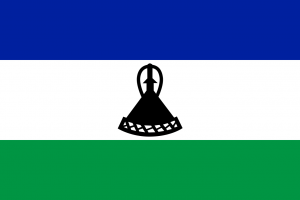Language/Southern-sotho/Vocabulary/Introducing-Oneself
Lesson on Introducing Oneself in Southern Sotho
Welcome to the "Complete 0 to A1 Southern Sotho Course". In this lesson, we will learn how to introduce ourselves and ask for someone's name, as well as how to address people appropriately in Southern Sotho. By the end of this lesson, you will be able to confidently introduce yourself and have simple conversations with native speakers.
Using Proper Greetings in Southern Sotho
Before we dive into introducing ourselves, let's first learn about the proper greetings in Southern Sotho. Greetings in Southern Sotho are an important aspect of the culture, and using them correctly can make a big difference in how someone perceives you.
Common Greetings
Here are some common Southern Sotho greetings and how to respond to them:
| Southern Sotho | Pronunciation | English Translation |
|---|---|---|
| Dumela | doo-meh-lah | Hello (general greeting) |
| Lefika | leh-fee-kah | Hello (used by older people or superiors) |
| Kea leboha | keh lee-boh-hah | Thank you (response to greeting) |
| Totobetsi | toh-toh-beh-tsee | Goodbye (formal) |
| Tsamaya sentle | tah-mah-yah sen-tleh | Goodbye (informal) |
Introducing Oneself in Southern Sotho
Asking for Someone's Name
If you are meeting someone for the first time and want to ask for their name, you can say:
- "O kae?": This means "Where are you?" and can be used as a general greeting or as a way to initiate the conversation.
- "Lebitso la hao ke mang?": This means "What is your name?" and is a more formal way of asking for someone's name.
Introducing Yourself
Now, let's learn how to introduce ourselves in Southern Sotho. Here is an example:
- "Ke ne ke lebelletse lebitso la ka.": This means "I am called my name."
Here are some additional phrases that can be used when introducing oneself:
- "Ke lumela hao.": This means "Nice to meet you."
- "Ke be ke re: your occupation, your age, your place of origin.": This means "I am a your occupation, your age years old, and I come from your place of origin."
Addressing Someone Appropriately
It is important to address someone appropriately in Southern Sotho depending on their age or social status. Here are some examples:
- "Ntate": This means "Sir" and is used to address an older or respected man.
- "Mme": This means "Madam" and is used to address an older or respected woman.
- "Nkgono": This means "Queen" and is used to address a queen or chief's wife.
Practice Time!
Now that we have learned how to introduce ourselves in Southern Sotho, it's time to practice! Try introducing yourself to a friend, family member, or even to yourself in the mirror. Don't be afraid to make mistakes – practice makes perfect!
Cultural Tidbit
In Southern Sotho culture, it is customary to greet everyone you meet, even if they are strangers or if you are just passing by. This is a sign of respect and creates an atmosphere of friendliness and warmth within the community.
Other Lessons
- Common Greetings
- Modes of Transportation
- Daily Routines
- Counting Numbers
- Shopping Vocabulary
- Food
- Count to 10
- Education
- Geography
- Feelings and Emotions

